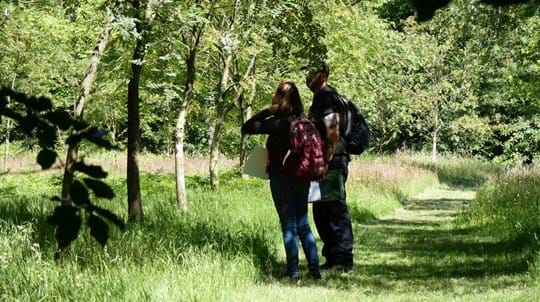
About us

English Heritage
English Heritage are delighted to collaborate with Observatree, to allow Tree Health Surveyors access to English Heritage sites in support of the early warning system for tree health issues in England.
English Heritage cares for the National Heritage Collection of more than 400 state-owned historic sites and monuments, spanning six millennia – from world-famous prehistoric sites to grand medieval castles, from Roman forts on the edges of the empire to a Cold War bunker. Through these, we bring the story of England to life for over 10 million people each year.
On 1 April 2015 the old English Heritage separated into two parts: Historic England that champions the nation’s wider heritage, running the listing system, dealing with planning matters and giving grants; and a charity (English Heritage) that looks after the collection and opens them to the public under a licence from Historic England that runs until 2023.
The internationally-important collection in our guardianship includes over 38,000 specimen trees and approximately 160 hectares of woodland. Reasons for their occurrence and location on these sites are as diverse as their distribution, ranging from individual or groups of trees on ancient monuments to designed historic landscapes with over 5,000 trees.
Many of these trees make a substantial and valuable contribution to the character of an area and sense of place. They are enjoyed by local communities, sometimes help screen intrusions and provide a valuable habitat for wildlife.
Some trees have survived for hundreds of years, some possibly over a thousand years and can be considered living monuments important in their own right. Other individuals are of botanical importance or are magnificent champions in height and girth.
Some trees have survived for hundreds of years, some possibly over a thousand years and can be considered living monuments important in their own right. Other individuals are of botanical importance or are magnificent champions in height and girth.
Examples include:
The mulberry tree (Morus nigra) at Down House, home of Charles Darwin, which he observed and recorded and was also used by his children to climb down out of the house.
The SSSI designated woodlands at Kenwood House, valued for their standing deadwood, and which is the closest SSSI to the centre of London. Sadly, it is also well within the area affected by oak Processionary moth.
Oaks at Coombe Conduit (near Kingston) – are certainly around 400-500 years old and were possibly saplings when Cardinal Wolsey built Hampton Court. This is the best preserved of a series of conduit houses which collected fresh spring water that was piped about 3 miles, under the river Thames, to provide the Palace with clean water.
Wigmore Castle has some surprisingly large field maples which could well be 200 to 300 years old.
The ‘Royal Oak’ at Boscobel House has an interesting history, though the current one is not the original (and probably not more than a couple of hundred year old) but believed to be a scion of the original in which Charles II hid.
Bayham Abbey has a large beech tree growing on the remains of the wall behind the high alter which is believed to have been deliberately planted as part of Humphry Repton’s landscaping of the wider area making it just over 200 years old (2018 is the 200th Anniversary of Repton’s death).
At Osborne House (Isle of Wight) the treescape was laid out in part under the direction of Prince Albert and many trees were planted by the Royal Family.
As the weather warms, and as people are planning their surveys, we look forward to supporting requests for access to English Heritage sites.